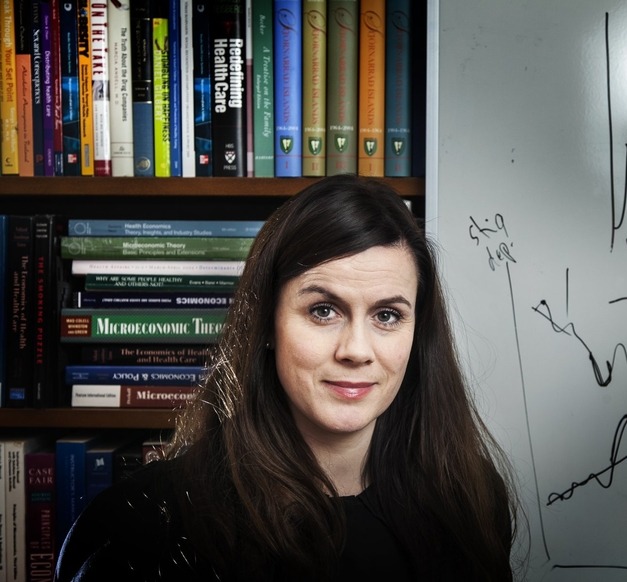Tinna Laufey, professor at the Faculty of Economics
Many know from experience how bad health can seriously effect both work and play; be it for shorter or longer periods. Is it possible to evaluate how much it is worth in cash to get rid of such ailments? Yes, says Tinna Laufey Ásgeirsdóttir, professor in economics, who leads a team of research scientists and students who study how much it is worth to those who suffer from chronic pain to get rid of it altogether.
"The point is that various benefits of health care systems and preventive medicine are fairly tangible and can thus easily be measured; such as increased work ability in individuals who get cure to their diseases. Other benefits are less obvious and more difficult to evaluate, such as how much it is worth to live in less pain. However, this factor can be the most important upside to many treatments. It is thus important that the worth of such benefits are taken into account when evaluating the cost benefit of different treatments, even though the evaluation itself can be tricky," explains Tinna.
The study uses models which allow for nonlinear effects in income. "The model calculates the additional income needed so that the individual would be as well off with a certain disease as he would be if he did not have it," she adds.
The research team is comprised of both Icelandic and international scholars as well as undergraduate and graduate students. Anna Guðrún Rangarsdóttir, Kristín Helga Birgisdóttir, Brynja Jónbjarnardóttir, Þórhildur Ólafsdóttir, Hanna Björg Henrysdóttir, Sigurður Páll Ólafsson og Kristjana Baldursdóttir have taken part in the study in Iceland with Tinna.
Tinna Laufey
"It is extremely valuable to get rid of the pain caused by mental illness according to our monitoring and participants seem to be willing to spend quite a lot to be rid of it."

"It is obviously beneficial from an academic point of view to work with people who bring diverse aspects to the table and it generally increases the quality of any project. But it is also a lot more fun," says Tinna on the advantages to working in large research teams. The team has looked at many diseases using the income model such as depression, anxiety, arthritis, pains, cold, cardiovascular diseases and diabetes. "We are, furthermore, studying behavioural health and factors related to it such as abuse of alcohol, smoking and physique," says Tinna.
The results have been published in international scientific journals and attracted the attention of the media; including the New York Times. "It is extremely valuable to get rid of the pain caused by mental illness according to our monitoring and participants seem to be willing to spend quite a lot to be rid of it. It is also interesting to see that participants’ willingness to pay to be rid of their disease is not necessarily in direct relation to its severity. People could, for example, be willing to sacrifice a great deal of other qualities of life; i.e. spend less, to be rid of pain even though they are not part of a medically serious disease," says Tinna.
The results of the study have both scientific and practical value according to Tinna. "The scientific value is in the methodological contribution in using the income model and its development in evaluating health. The practical value, however, is that by using this method the change in pain levels can be taken into account when comparing the benefits and cost of various interventions in the public health care system," she says.


